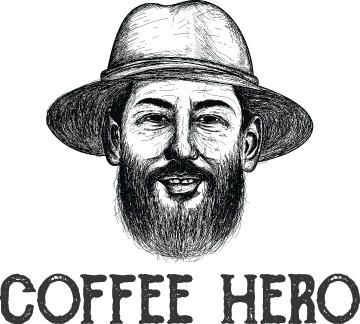
HOW TO PLAN A COFFEE MENU
HOW TO PLAN A COFFEE MENU
A well-planned coffee menu is vital for any Australian cafe's success. It goes beyond just listing drinks; it's about reflecting your brand, catering to local tastes, and driving profitability. This guide will walk you through understanding your customers, selecting the right coffee offerings from classic flat whites to specialty coffee, and pricing them effectively. We’ll cover everything you need to create a balanced and appealing menu that keeps customers returning and your business thriving.
Understanding Your Customer and Cafe Concept
Before you choose a single coffee bean, you need to know who you’re serving. The success of your menu depends heavily on understanding your target audience and your cafe’s core concept.
A bustling CBD cafe catering to office workers on the go will have a very different menu from a relaxed suburban spot where locals come to unwind. Consider if your customers are students looking for an affordable caffeine hit, brunch enthusiasts seeking a specialty experience, or busy commuters needing speed and consistency.
Your cafe's identity also shapes your menu. Are you a high-volume, fast-paced espresso bar or a quiet, community-focused space? Your concept will guide decisions on whether to focus on quick-to-make classics or offer more complex, time-consuming brews.
Take a look at other cafes in your area to see what they are doing well and, more importantly, to identify any gaps in the market that your unique menu could fill.
For training and delivering consistent espresso, check Coffee Hero’s wholesale & training page. Coffee Hero Wholesale
Building Your Core Coffee Offering
The foundation of any great Australian cafe menu is a solid and reliable selection of core drinks. These are the classics that customers expect and order day in and day out. Mastering these essentials with high-quality ingredients is the first step toward building a loyal following.
The Espresso Essentials
For any Australian cafe, a well-executed espresso menu is non-negotiable. These are the drinks that form the backbone of your sales and demonstrate your baristas' skill. Your menu must feature the classics, including a rich espresso, a strong long black, a frothy cappuccino, a silky latte, and of course, the iconic flat white.
The quality of these fundamental drinks defines your cafe's reputation, so using excellent coffee beans from a consistent supplier is paramount to getting them right every single time.

Broadening the Selection with Brews and Filters
While espresso is king, the Australian coffee palate has become more diverse. Including brewed and filter options caters to customers seeking a different kind of coffee experience. Offering batch brew is a smart move for busy periods, as it provides a quick and consistently delicious black coffee option.
For those who appreciate the finer details, featuring a rotating single origin as a pour-over can attract coffee connoisseurs and create a point of difference. Given Australia’s climate, cold brew and iced lattes are no longer optional, they are essential menu items for staying popular through the warmer months.
Check out our selections of Freshly Roasted Specialty Coffee Beans Delivered Australia Wide
Catering to Diverse Tastes
A truly successful menu offers something for everyone. The demand for dairy-free options has grown significantly, so providing a range of alternative milks is now standard practice. Ensure you have oat, almond, and soy milk available to accommodate various dietary preferences and needs.
Beyond coffee, your menu should include other popular beverages. A quality hot chocolate, a flavourful chai latte, and a curated selection of teas will make your cafe more welcoming to a wider audience and increase the average spend per customer.
Offer dairy alternatives (oat, almond, soy). Add non-coffee options - hot chocolate, chai and a curated tea list - to capture non-coffee customers and increase spend.
Strategic Menu Pricing for Profitability
Setting the right price for your coffee is a balancing act. You need to remain competitive within your local market while ensuring your business is financially sustainable.
Effective pricing isn't about guessing; it's a calculated strategy based on your costs and desired profit margins. This approach ensures every cup you sell contributes positively to your bottom line.
Pricing must cover costs and overheads while staying competitive. Aim for a beverage COGS of roughly 20–25% of the sale price, a typical target in the café industry. Use accurate COGS calculations (beans, milk, cups, lids, sleeves) to set margins. For a deeper practical guide to beverage costing, link to an industry resource like Bernick’s beverage costing guide. Bernick's
Calculating Your Cost of Goods Sold (COGS)
To price your coffee correctly, you must first understand exactly how much it costs to make one cup. This is known as your Cost of Goods Sold (COGS). It includes every single item that goes into the final product that you hand to a customer.
This means accounting for the coffee beans, milk, sugar, cup, lid, and even the sleeve. A precise COGS calculation is the first step towards building a profitable menu.
-
Step 1: Make a complete list of every ingredient and disposable item used to produce one finished coffee.
-
Step 2: Determine the specific cost for the amount used of each item. For example, calculate the cost per gram of coffee and the cost per millilitre of milk.
-
Step 3: Add all of these individual costs together to get the total COGS for one beverage.
How to calculate COGS (quick steps):
-
List every ingredient and disposable item per drink.
-
Calculate cost per unit (cost per gram / ml).
-
Sum to get one-drink COGS.
-
Menu price = COGS ÷ target cost percentage (e.g., $1.00 ÷ 0.25 = $4.00).
If you want a simple template, check guides that show a café COGS spreadsheet (useful examples: Slant POS). blog.slantco.com
Setting Your Prices
Once you know your COGS, you can set a menu price that ensures profitability. In the Australian cafe industry, a healthy beverage cost percentage is typically between 20-25%. This means your COGS should be no more than a quarter of the menu price.
To set your price, divide your COGS by your target cost percentage (e.g., $1.00 COGS / 0.25 = $4.00 menu price). Remember that this price also needs to help cover your overheads like rent, utilities, and wages. This coffee menu pricing strategy protects your profit margin and keeps your business healthy.
Designing an Effective Coffee Menu
The physical design of your menu is a powerful sales tool. It's often the first thing a customer interacts with, and it can influence their choices and overall impression of your cafe. A well-designed menu is more than just a list of items; it should be clean, easy to navigate, and a true reflection of your brand's identity.
Layout and Readability
Clarity is key to good menu design. A cluttered or confusing menu can frustrate customers and slow down service. Group your drinks into logical categories like 'Espresso', 'Brewed Coffee', and 'Not Coffee' to make navigation simple.
Use a clean, legible font and allow for plenty of white space to give the menu a professional and organised feel. It's also helpful to place your signature or high-profit items in spots where the eye naturally looks first, such as the top right corner, to subtly guide customer selections.
Group items (e.g., Classic Coffees, Brew Bar, Not Coffee) and use white space and a readable font. Put signature/high-margin items where the eye lands first (top-right). Use short, appetising descriptors (e.g., “Single Origin - stone fruit & chocolate”).
Descriptive and Simple Language
The words you use on your menu can make a drink more appealing. Instead of just listing "Single Origin," add a short, enticing description with simple tasting notes, such as "Single Origin Feature: tasting of stone fruit and chocolate."
Avoid alienating jargon. Offer short tasting notes for single origins. Example: “Single Origin stone fruit, chocolate, medium body.
The Benefit of a Consistent Coffee Supplier
The quality of your coffee is the heart of your business, and it relies entirely on the beans you source. Partnering with a consistent coffee supplier is one of the most important business decisions you will make.
This relationship goes beyond simply ordering stock; it’s about establishing a reliable foundation for your core product. A consistent supplier is a partner in your success.
When your coffee supplier delivers the same high-quality beans with every order, you can produce a product that your customers trust. This consistency in taste and quality builds loyalty and keeps people coming back.
Furthermore, a dependable supplier ensures you never face the disaster of running out of coffee, preventing lost sales and protecting your reputation. This operational stability is a massive benefit, allowing you to focus on your customers. A great supplier can also provide valuable insights on new specialty coffee trends, helping your menu stay fresh and exciting.
Use a reliable supplier to deliver stable taste and inventory. Coffee Hero’s wholesale offering includes training and equipment which can be a big benefit to cafes.
Plan Hit a Coffee Menu
To summarise, a successful coffee menu begins with a clear understanding of your customers and your cafe's brand. The foundation of that menu should be a solid core offering of Australian favourites, especially a perfectly made flat white.
A smart coffee menu pricing strategy, based on a careful calculation of your costs, is absolutely essential for long-term profitability. Finally, a clean, readable design and a partnership with a consistent, reliable coffee supplier will bring it all together. This strategic approach ensures your menu is not only appealing to customers but also a powerful driver of your cafe's success.
Ready to perfect your coffee offering? Contact us. Coffee Hero is your partner for residential and commercial coffee.
Frequently Asked Questions About Planning a Coffee Menu
How Do I Make a Good Coffee Menu?
A good menu is balanced. It includes essential espresso drinks, a few specialty options like single origin or cold brew, and non-coffee choices. It should be easy to read, reflect your brand, and be priced for profitability.
What Should Be On a Coffee Menu?
In Australia, your menu must include espresso, cappuccino, latte, flat white, and long black. You should also offer popular alternatives like batch brew, cold brew, hot chocolate, chai, a selection of teas, and a range of alternative milks.
How Do You Structure a Cafe Menu?
Structure your menu logically. Group similar items together, such as 'Classic Coffees', 'Brew Bar', and 'Other Drinks'. Place your most popular or high-profit items in prominent positions where customers' eyes are drawn first.
How Do You Price Coffee for a Cafe?
First, calculate the total cost of all ingredients for one drink (coffee, milk, cup, lid). This is your Cost of Goods Sold (COGS). Aim for your menu price to make this COGS around 20-25% of the total price to ensure a healthy profit margin.
What Are the 4 Types of Menus?
While there are many variations, the four main types are: à la carte (items priced individually), table d'hôte (a set multi-course meal at a fixed price), static (a menu that rarely changes), and dynamic/cyclical (a menu that changes daily or weekly). Most cafes use a static menu.
How Do You Create a Unique Coffee Drink?
Start with a quality espresso base. Experiment with unique syrups (like native Australian botanicals), spices, or different milks. Consider creating a signature latte or a unique seasonal cold brew infusion. Test it thoroughly before adding it to the menu.
